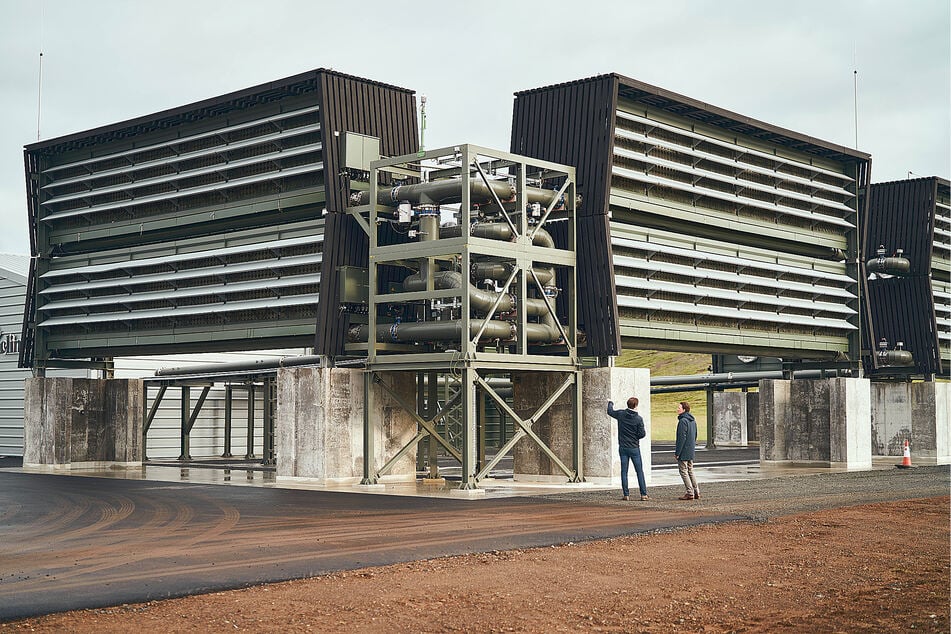Carbon capture: Here's why this climate solution isn't much help right now
Iceland - The latest Intergovernmental Panel on Climate Change climate playbook highlighted using carbon capture to grab the gas out of the air, but right now the world's biggest direct air carbon capture project is tiny, expensive, and power hungry.

Unless the technology wildly improves, it will take the same amount of energy to remove CO2 from our atmosphere as it took to put it there in the first place, according to Recharge.
The method of Direct Air Capture (DAC), which is still taking its baby steps, scrubs CO2 out of the atmosphere with filters that hold onto the greenhouse gas as air passes through them. The captured carbon is then injected into rock formations, where it takes two years to solidify.
Swiss company Climeworks’ Orca plant in Iceland, which is the world's biggest DAC project, nabs 4,000 tons of CO2 annually, and cost over $10 million to build. Unfortunately, that's only the equivalent of under 900 cars worth of emissions each year.
According to Australian number-crunching company Keynumbers, it would take a whopping eight million Orca plants to deal with yearly CO2 emissions, and that wouldn't come cheap. At the bare minimum the projects would cost at least $80 trillion or as much as the entire planet's GDP.
Oh, and money wouldn't be the only cost. In 2020, fossil fuels generated 462 exajoules, and emitted 32 billion tons of CO2.
Keynumbers found that having enough DAC plants to gobble those emissions up would chow down on 448 exajoules of energy. That far outstrips renewable energy generation, which totaled around 30 exajoules in 2020, according to Our World in Data.
The International Energy Agency's (IEA) webpage on DAC lightly understates the issue: "More efforts needed."
As things stand, Direct Air Capture can at best supplement the main work being done to transition into renewable energy.
Cover photo: IMAGO/Cover-Images